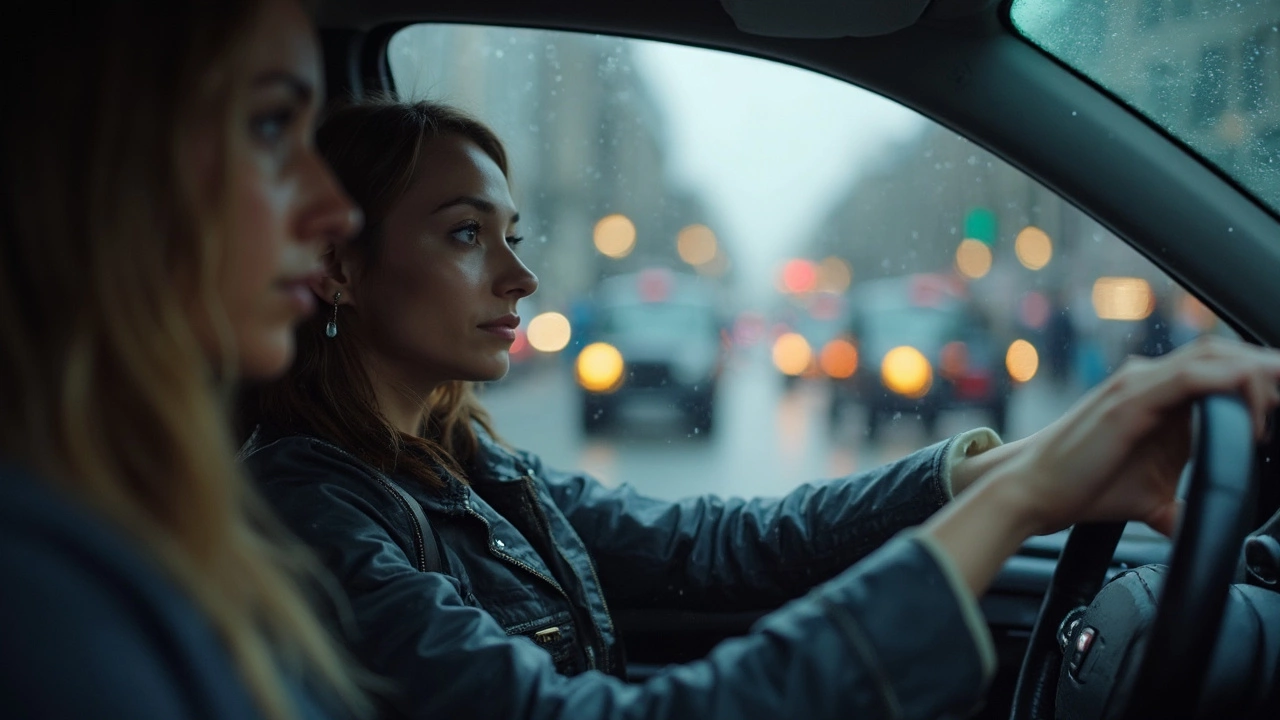If you’re watching friends peel out of the test centre with fresh licences and wondering how quickly you could join them, you’re not alone. Everyone secretly wants the answer to how fast you can really learn to drive. Here’s the thing—there’s no magic number, but there are tricks and hard facts you should know.
Some people breeze through and pass within a couple of weeks, while others take months. It’s not just about squeezing in more lessons (though practice does matter). The type of lessons you book and how you tackle your nerves play a big part, too. Driving instructors have seen students go from zero to test-ready in under two weeks, especially with “intensive courses,” but those aren’t for everyone.
Want to shave weeks off your timeline? Get ready for honest info and down-to-earth tips—no sugar-coating, just what actually works. Let’s get into what sets the quickest learners apart from the rest.
- How Fast Can You Actually Learn to Drive?
- What Changes the Speed: Factors That Matter
- Real Stories: Rapid Learners and Their Tactics
- Smart Tips to Boost Your Own Progress
How Fast Can You Actually Learn to Drive?
There’s a huge range in how long it takes people to get their driving licence. In the UK, most people pass their driving test after 40 to 50 hours of professional lessons plus about 20 hours of extra practice with family or friends. But some manage to pull it off much faster, while others need more time.
If you’re wondering about the quickest time to learn to drive, the current record in the UK is just five days. That was during an intensive course, where someone took lessons for several hours a day, every day, until their test. Not everyone can handle that pace. Your schedule, nerves, and how quickly you pick up new skills all matter.
Some driving schools claim you can get your pass in a week. While this works for a few, it’s more common to take a couple of months when spreading out lessons around school, work, and your instructor’s availability. Let’s compare a few typical timeframes:
| Type of Learning | Typical Timeframe | Notes |
|---|---|---|
| Standard weekly lessons | 3-6 months | 1-2 hours each week, slower pace |
| Intensive course | 1-3 weeks | Daily lessons, super focused |
| Private practice only | Varies—often longer | Depends on experience and confidence |
According to a report by the Driver and Vehicle Standards Agency (DVSA), "Most new drivers take an average of six months to be test-ready, but intensive courses can cut this down significantly for people who commit the time and effort."
"Learning to drive quickly is possible, but only if you’re consistent and put in the hours. We see students go from zero to test-ready in two weeks, but you have to be dedicated." – Alex Bass, DVSA-Advised Driving Instructor
So, if you’re laser-focused, have a free schedule, and the nerves of a race car driver, you might get it done in under two weeks. For most people, though, a more relaxed approach over a couple of months works best and sticks long-term. The real answer: the quickest is about five days, but only for a select few. The average learner should expect 3-6 months, depending on how hard they push.
What Changes the Speed: Factors That Matter
How long you’ll need to nail your driving test mainly comes down to a handful of things. Some are totally in your control—others, not so much. If you’re hoping for the quickest time to learn to drive, it pays to know what’s actually going to speed things up or slow you down.
First, there’s the number of lessons. According to the UK’s DVSA, most learners need about 45 hours of lessons plus 22 hours of private practice before they’re test-ready. Cramming all of that into a two-week intensive course can work, but it’s not magic—you still need that time behind the wheel.
| Factor | How It Affects Your Progress |
|---|---|
| Age | Younger learners (teens/20s) often pick up driving faster—something to do with reaction time and memory. |
| Lesson Type | Regular weekly lessons drag things out. Intensive courses cram skills fast, but can be overwhelming for some. |
| Private Practice | Extra time driving with family or friends (if legal/insured) is a massive booster. |
| Test Waiting Times | Even if you’re ready, driving test backlogs can mess with your timeline, especially since 2022. |
| Nerves & Confidence | Some folks freeze up during tests. The more relaxed you get, the quicker you’ll pass. |
Your instructor matters too. Some are great at getting you confident and exam-ready fast. Others stick to a standard pace no matter what. Shop around or ask for recommendations if you want to move faster.
The kind of area you practice in is a sneaky factor. Busy city streets mean dealing with more situations, which makes you a better (and faster) learner. On the flip side, if you only drive quiet country roads, you’ll likely need more lessons to handle city driving later.
- Mix up your practice locations: city, highway, back roads.
- Take short, frequent drives outside of lessons—fifteen minutes a day does more than one long drive a week.
- If possible, book your theory test early—lots of people get held up waiting for test slots.
Last thing: your own motivation. If you’re itching to drive and keep pushing yourself, you’ll usually pass sooner than someone who’s just going through the motions.

Real Stories: Rapid Learners and Their Tactics
Alright, here’s where things get real. Some learners hit the driving test way faster than others, and their stories aren’t just bragging rights—they’re goldmines for anyone who wants to speed things up.
Take the UK: according to the DVSA (Driver and Vehicle Standards Agency), the average learner needs about 45 hours with an instructor plus 22 hours of private practice. But there are people who pass way under that. In 2023, Jamie from Cardiff cleared his practical just nine days after his first lesson, thanks to a five-day intensive course and six hours of practice every day. He’s not some superhuman—just determined and organized.
Lots of rapid learners use crash courses, where lessons are packed into one or two weeks. But it’s not all about going turbo-speed—it’s about staying consistent and focused. Here’s what fast learners actually did:
- Booked an intensive course that crams weeks of driving into days, usually 4-8 hours daily.
- Practiced in their own car with a family member every evening, even if it was just a quick trip to the shop.
- Recorded themselves (with a phone mount) while practicing to review mistakes at home—sounds nerdy, but it works.
- Scheduled their theory test before starting lessons, so everything was ready back-to-back.
- Used driving apps or online hazard perception clips to speed up reaction times.
Here’s a look at some actual numbers people have reported for the quickest time to learn to drive versus the average. These stats show just how much difference the right approach can make:
| Learner | Total Hours (Lessons + Practice) | Time to Pass | Method |
|---|---|---|---|
| Jamie (Cardiff) | 27 | 9 days | 5-day intensive + daily practice |
| Sophie (Manchester) | 31 | 3 weeks | 2-hour lessons, daily partner driving |
| UK Average (DVSA 2024) | 67 | 3-6 months | Weekly lessons |
The fastest learners swear by chunking lessons together, practicing in real-world traffic, and getting feedback after every drive. Jamie said reviewing his bad habits straight after each session worked better than any simple paperwork. If you want to go fast, copy what these folks did—you’ll dodge the classic rookie mistakes and probably enjoy the ride more, too.
Smart Tips to Boost Your Own Progress
If you want to smash through the learning curve, you need a plan. It’s not just about racking up hours behind the wheel. Smart moves, proven routines, and a few tech tools can make a huge difference in how quickly you grab that licence. Here’s how you stack the odds in your favour.
- Book consistent lessons. Random lessons here and there slow you down. Aim for at least 2-3 sessions per week. Consistency helps your muscle memory click faster.
- Consider “intensive” or semi-intensive courses. These compact all your driving lessons into just one or two weeks. Not everyone likes the pace, but it works wonders for folks who want to learn fast and don’t mind a deep dive.
- Practice the theory side right from the start. Don’t wait until you can parallel park before you study the Highway Code or practice theory test questions. Students who prep for the theory while learning to drive often pass both tests within a shorter timespan.
- Use driving apps for private practice. There are loads of free and cheap apps that help spot your mistakes, quiz you on signs, or run you through mock tests. For example, the DVSA’s official app is packed with practice questions and hazard perception clips.
- Mix it up—practise at different times of day and in all weather. If you only drive in bright daylight on quiet roads, you’ll get a shock on the test day if it’s raining or there’s rush-hour traffic.
Check out how these actions stack up when it comes to the average time taken to pass the driving test in the UK (according to the DVSA):
| Learning Method | Average Lessons | Average Weeks to Pass |
|---|---|---|
| Standard Weekly Lessons | 40 | 15-20 |
| Intensive Course | 20-30 | 2-4 |
| Mix of Lessons + Private Practice | 35 | 10-15 |
One more thing—don’t let nerves eat away at your progress. If test-day jitters are a problem, try some relaxed practice drives with a friend or family member, ideally outside of lesson time. And, always ask your instructor for honest feedback. That’s the only way to fix mistakes fast and keep things moving.
Bottom line: Want to learn to drive in the quickest time possible? Stay consistent, mix hands-on practice with smart digital tools, and don’t leave the theory ’til the last minute. That’s how you shave off wasted weeks.

